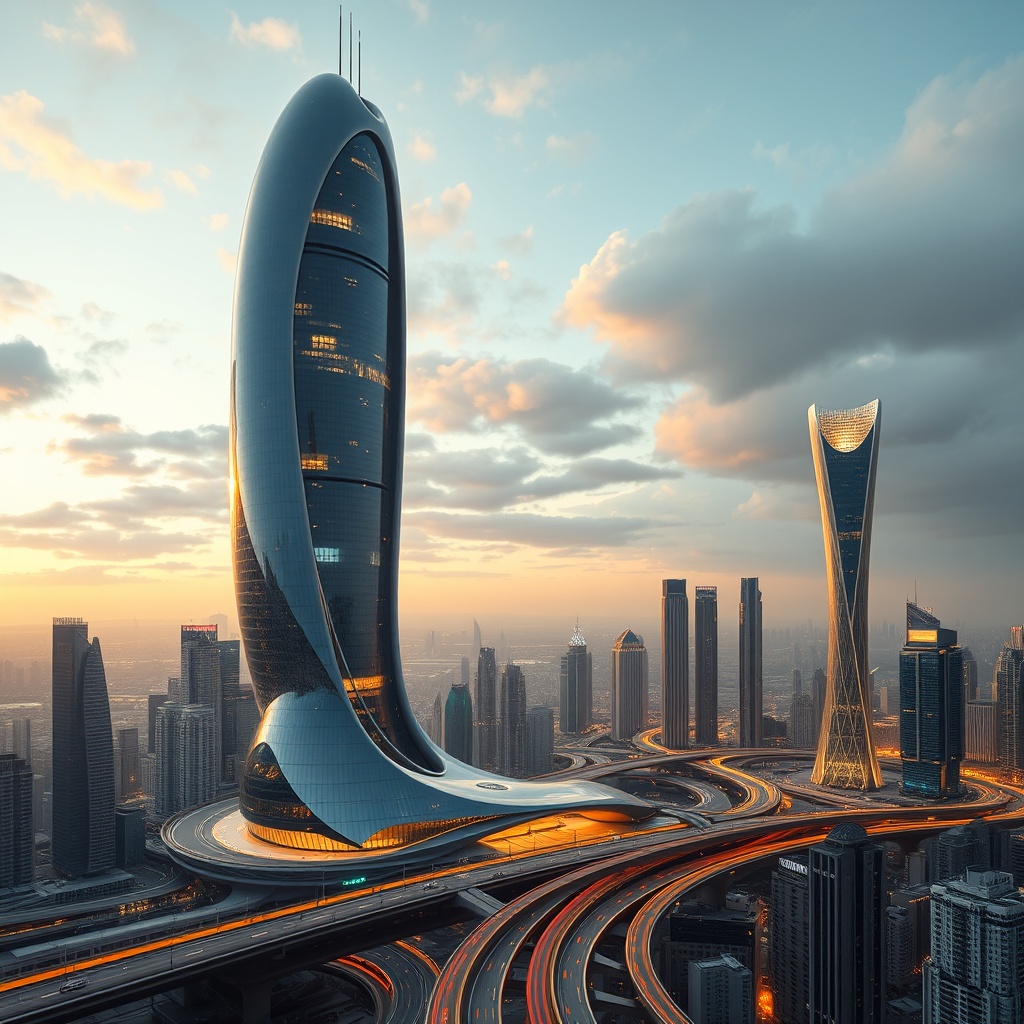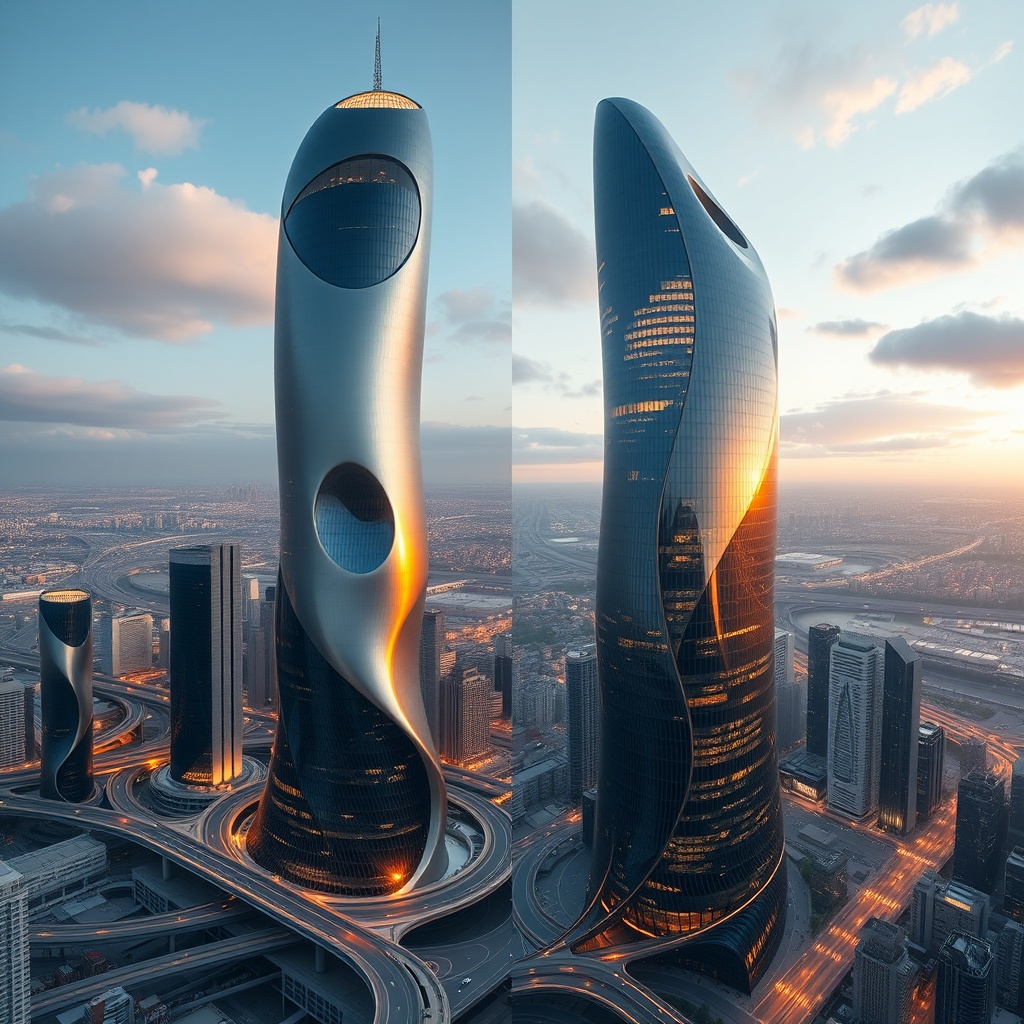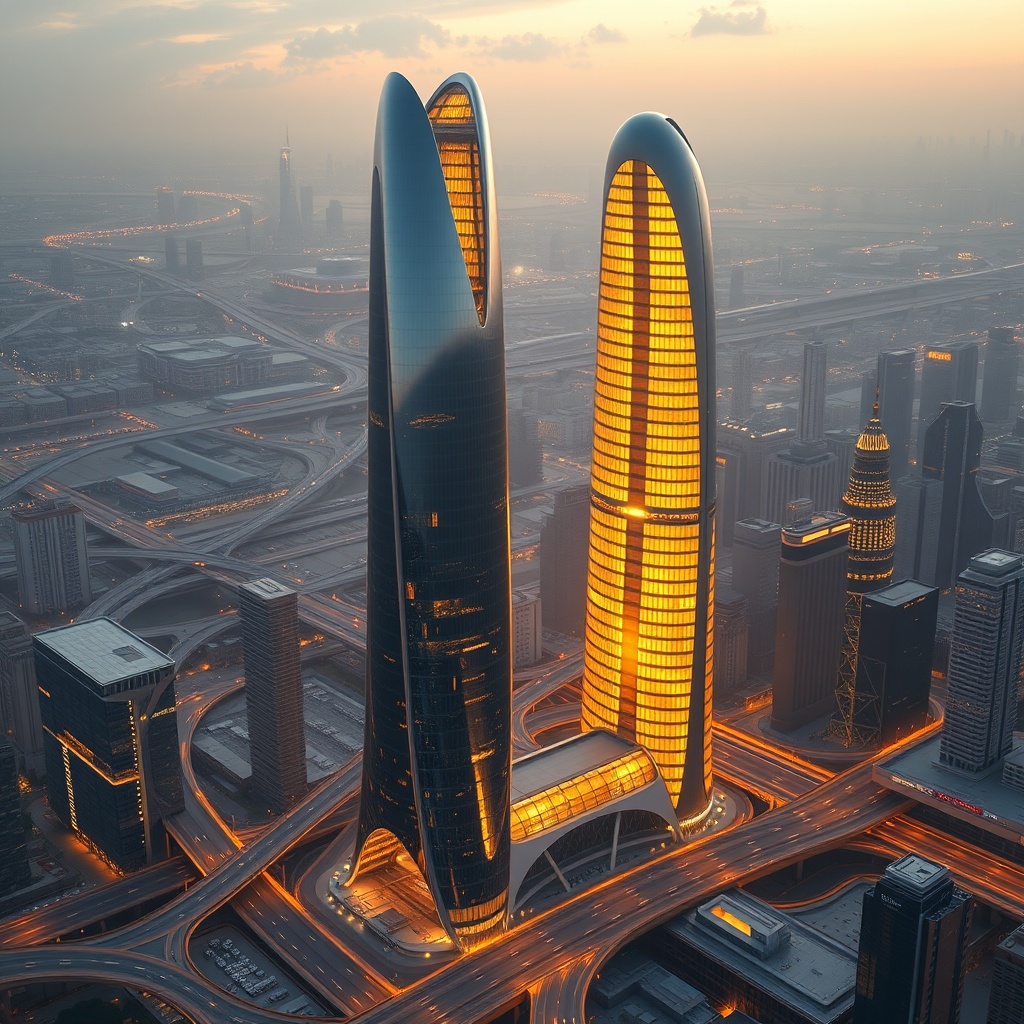

As we enter an age where technology and sustainability are at the forefront of innovation, the field of architecture is undergoing a revolution. Modern cities are evolving, driven by a wave of futuristic designs that blend functionality, aesthetic appeal, and environmental consciousness. These cutting-edge skyscrapers not only dominate the skyline but also represent a bold vision for the future of urban living.
Futuristic architecture is defined by its fluidity of form, often inspired by organic shapes that contrast with the rigid structures of traditional buildings. The buildings in the images presented here exhibit a harmonious blend of sleek curves, glass facades, and golden accents that mirror the glow of the sun, creating a stunning interplay of light and design.
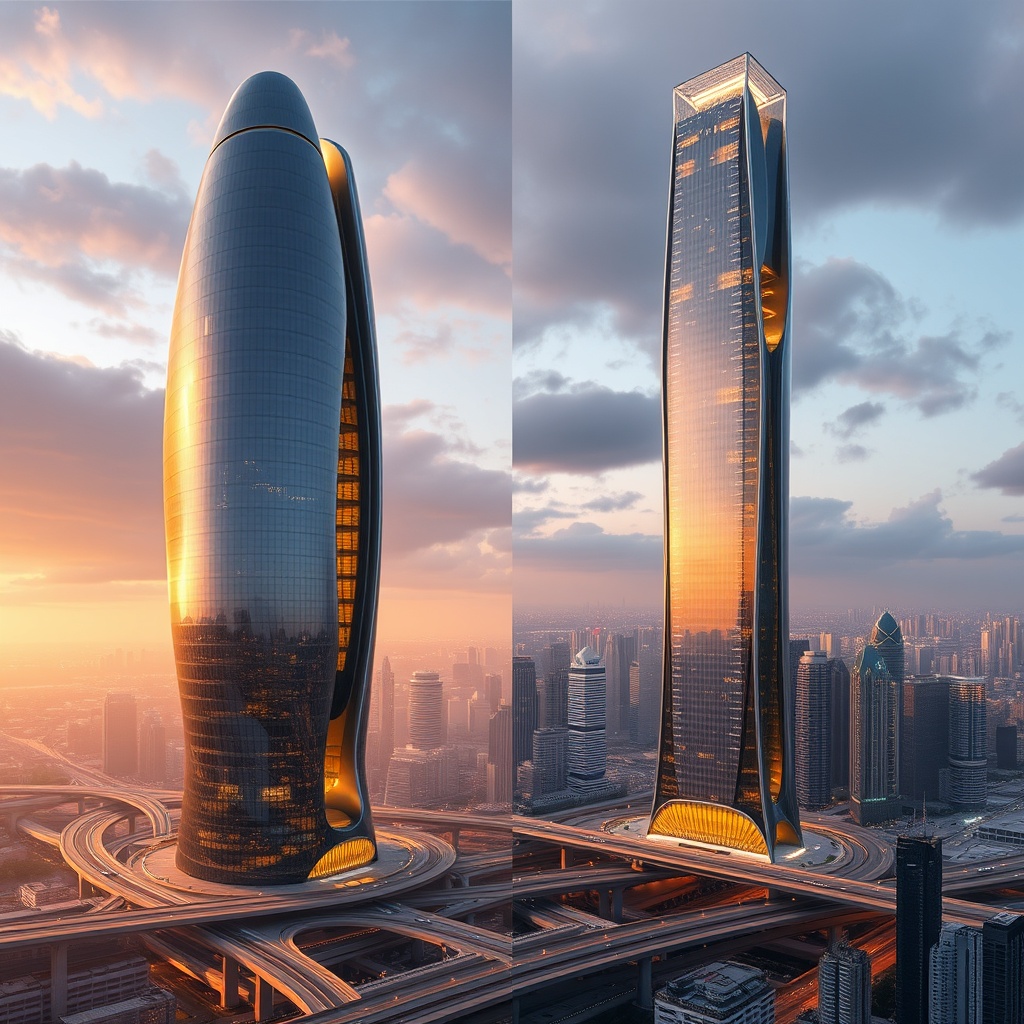
Curved Designs that Defy Convention
The trend of curved architecture signifies a departure from the traditional rectilinear forms of earlier skyscrapers. These new designs are aerodynamic, which not only adds a visual appeal but also enhances the structural integrity of the buildings. The curves allow for better wind resistance, reducing the strain on the foundation, which is crucial for supertall structures.
For instance, the smooth contours of these skyscrapers rise gracefully above the city, their gleaming glass surfaces reflecting the hues of the setting sun. The gentle curvature gives them a sense of movement, almost as if they are living organisms, growing and evolving as part of the urban ecosystem.
Integration with Urban Infrastructure
These architectural marvels are more than just aesthetically pleasing; they are designed to integrate seamlessly with the urban infrastructure around them. The elevated highways that coil around their bases resemble futuristic transport networks, facilitating the efficient flow of traffic while optimizing the use of space in densely populated urban centers.
As cities become more crowded, these innovative designs offer solutions to common urban challenges such as transportation, housing density, and sustainability. Their sleek forms allow for efficient use of space, while their integration with surrounding infrastructure ensures that they are functional as well as beautiful.
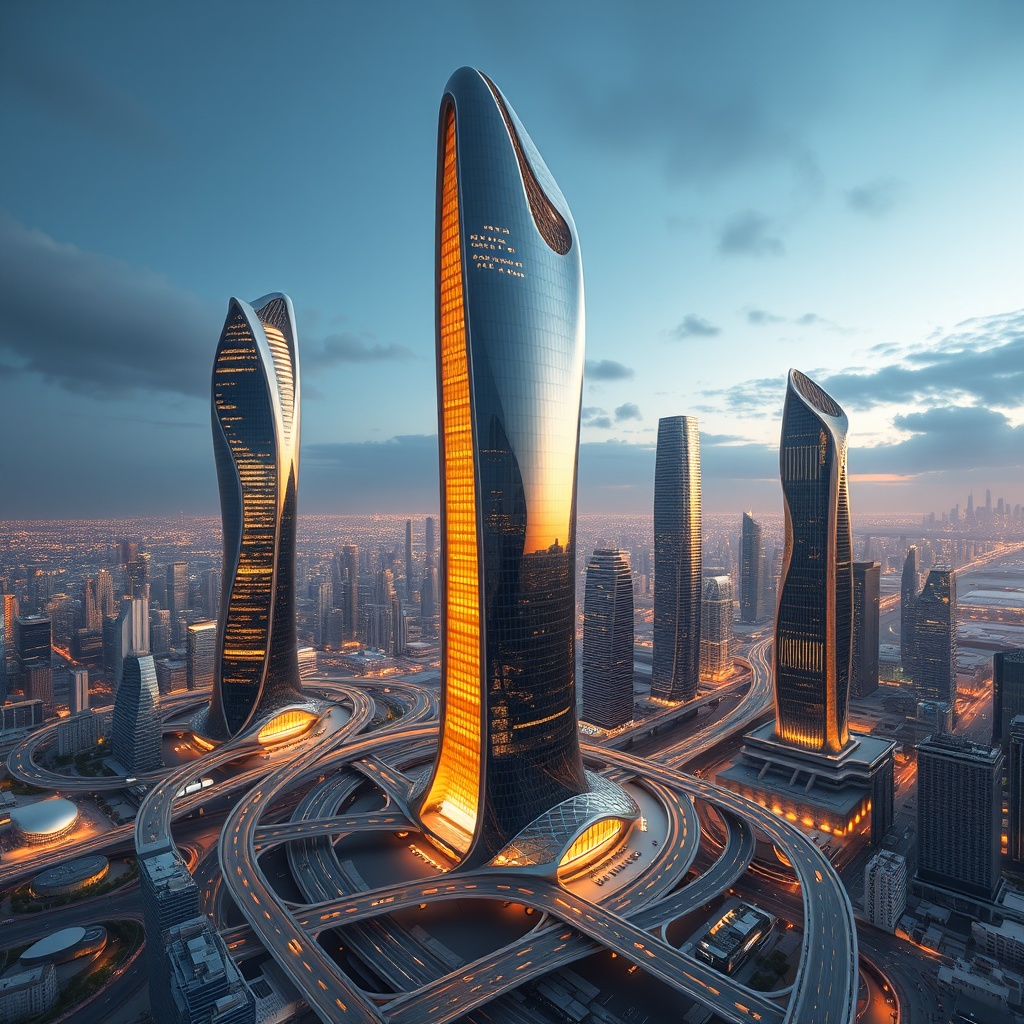
A Focus on Sustainability
Sustainability plays a central role in futuristic architectural designs. These buildings are often equipped with advanced energy-saving technologies, such as solar panels, wind turbines, and rainwater harvesting systems. The use of reflective glass helps to reduce the heat island effect, keeping the interiors cool without excessive reliance on air conditioning.
Moreover, the materials used in construction are chosen for their eco-friendly properties, ensuring that these buildings have a minimal environmental impact. Green rooftops, vertical gardens, and water-saving technologies are also common features, further enhancing the sustainability of these skyscrapers.
The Future of Urban Living
The futuristic skyscrapers we see today are just the beginning. Architects and engineers are constantly pushing the limits of what is possible, exploring new materials, construction techniques, and technologies that will shape the cities of tomorrow. As we look ahead, it’s clear that the future of architecture lies in creating spaces that are not only visually stunning but also sustainable and in harmony with the environment.
These skyscrapers are more than just buildings—they are symbols of a new era in urban development. As they continue to rise above our cities, they remind us of the incredible potential of human ingenuity and the possibilities that await us in the future of architecture.
